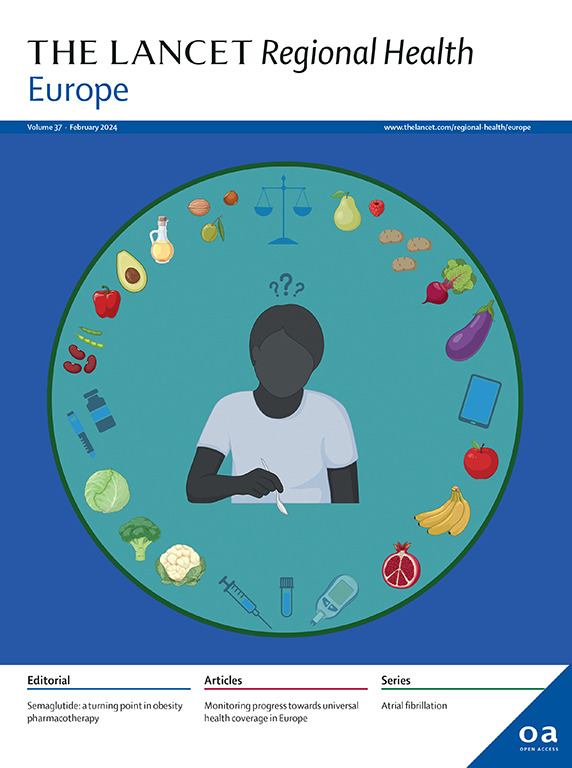Evolving antimicrobial resistance of extensively drug-resistant Gram-negative severe infections associated with conflict wounds in Ukraine: an observational study
IF 13.6
Q1 HEALTH CARE SCIENCES & SERVICES
引用次数: 0
Abstract
Background
Conflict can have devastating effects on the development and spread of antimicrobial resistance. In Ukraine, early data post-injury are limited. We aim to explore extensively drug-resistant (XDR) Gram negative phenotypes and genotypes for infections arising early following conflict-associated wounds in Ukraine.
Methods
Carbapenem-resistant infections following conflict-associated wounds in Ukraine (February–May 2024) underwent extended antimicrobial susceptibility testing (AST) for 19 antimicrobial agents using 2025 European Committee for Antimicrobial Susceptibility Testing breakpoints. Carbapenemase genes were identified using a novel multiplex molecular resistance assay. Infections arising in the first seven days versus those arising after seven days since injury were compared by logistic regression. Significance was set at p < 0.05.
Findings
100 isolates were tested (53, 53.0% Klebsiella pneumoniae; 16, 16.0% other Enterobacterales; 18, 18.0% Acinetobacter baumanii and 13; 13.0% Pseudomonas aeruginosa). Gentamicin (p = 0.0046) and colistin (p = 0.049) resistance were higher in infections arising later. Overall, resistance rates for amikacin (74/100, 74.0%), cefiderocol (44/100, 44.0%) and ceftazidime-avibactam (26/79, 67.1%) were observed. Prevalent resistance genes included NDM + OXA-48-like (24/100, 24.0%), NDM-only (24/100, 24.0%) and KPC (9/100, 9%). Others included OXA 23-like/51-like, IMP and/or mcr1. Earlier infection isolates had a higher burden of carbapenemases/isolate (p = 0.006).
Interpretation
Extensively drug-resistant infections were observed early post-injury in Ukraine, with some trend to further resistance in those arising later in the patient pathway. A diverse presence of carbapenemase genes amid XDR Gram negative phenotypes highlights the importance of early screening for mechanisms of resistance in this setting.
Funding
This study was funded by the Healthcare Infection Society and CW+ Charity.
乌克兰与冲突伤口相关的广泛耐药革兰氏阴性严重感染不断演变的抗菌素耐药性:一项观察性研究
冲突可能对抗菌素耐药性的发展和传播产生破坏性影响。在乌克兰,受伤后的早期数据有限。我们的目标是探索广泛耐药(XDR)革兰氏阴性表型和基因型感染在乌克兰冲突相关伤口后早期出现。方法乌克兰(2024年2月至5月)冲突相关伤口后的scarapenem耐药感染采用2025年欧洲抗微生物药敏试验委员会断点对19种抗微生物药物进行了延长的抗微生物药敏试验(AST)。碳青霉烯酶基因鉴定采用新的多重分子耐药试验。通过逻辑回归比较受伤后7天内发生的感染和7天后发生的感染。p <为显著性;0.05.结果共检出100株(53、53.0%为肺炎克雷伯菌;16.0%其他肠杆菌;18、18.0%鲍曼不动杆菌和13;13.0%铜绿假单胞菌)。庆大霉素(p = 0.0046)和粘菌素(p = 0.049)耐药性在晚发感染中较高。总体而言,阿米卡星(74/100,74.0%)、头孢地罗(44/100,44.0%)和头孢他啶-阿维巴坦(26/79,67.1%)的耐药率均较高。流行的耐药基因包括NDM + oxa -48样(24/100,24.0%)、NDM-only(24/100, 24.0%)和KPC(9/100, 9%)。其他包括OXA 23-like/51-like, IMP和/或mcr1。早期感染分离株碳青霉烯酶/分离株负担较高(p = 0.006)。解释:在乌克兰,损伤后早期观察到广泛的耐药感染,并有进一步耐药的趋势,这些感染在患者途径的后期出现。在XDR革兰氏阴性表型中碳青霉烯酶基因的多样性突出了在这种情况下早期筛查耐药机制的重要性。本研究由卫生保健感染学会和CW+慈善机构资助。
本文章由计算机程序翻译,如有差异,请以英文原文为准。
求助全文
约1分钟内获得全文
求助全文
来源期刊

Lancet Regional Health-Europe
Multiple-
CiteScore
19.90
自引率
1.40%
发文量
260
审稿时长
9 weeks
期刊介绍:
The Lancet Regional Health – Europe, a gold open access journal, is part of The Lancet's global effort to promote healthcare quality and accessibility worldwide. It focuses on advancing clinical practice and health policy in the European region to enhance health outcomes. The journal publishes high-quality original research advocating changes in clinical practice and health policy. It also includes reviews, commentaries, and opinion pieces on regional health topics, such as infection and disease prevention, healthy aging, and reducing health disparities.
 求助内容:
求助内容: 应助结果提醒方式:
应助结果提醒方式:


